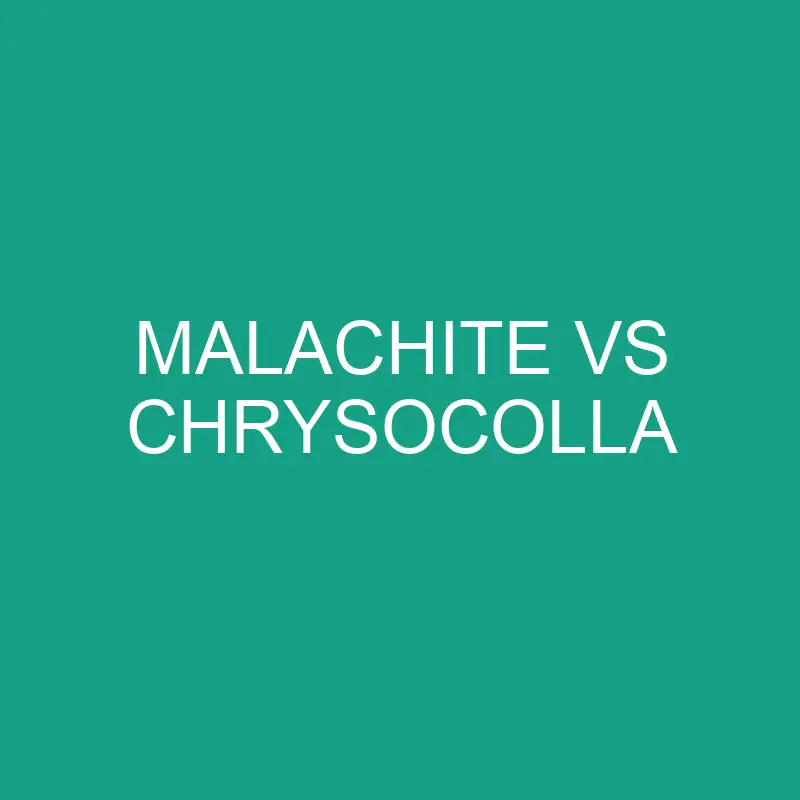Exploring the Verdant Hues of Green Gemstones
In the vast and vibrant spectrum of gemstones, green stones hold a special allure. Malachite and Chrysocolla, both adorned in verdant hues, stand out as captivating members of this green gemstone family. In this comparative exploration, we’ll delve into the distinct features, geological origins, and metaphysical properties of Malachite and Chrysocolla, unraveling the verdant mysteries these green gemstones bring to the world of jewelry and metaphysical practices.
Post Contents
Malachite: The Lustrous Green Veins of Nature
Origins and Geological Background:
- Composition: Malachite is a copper carbonate mineral, known for its vibrant green color and characteristic banding.
- Color: Malachite exhibits various shades of green, ranging from light green to deep emerald, with distinctive dark green bands.
- Formation: It forms as a secondary mineral through the weathering of copper ore deposits and is often found in association with other copper minerals.
Physical Properties:
- Color and Appearance: Rich green with characteristic banding, often polished to a high luster.
- Transparency: Malachite is typically opaque.
- Crystal Structure: Malachite crystallizes in the monoclinic crystal system.
- Hardness: It has a hardness of 3.5-4 on the Mohs scale.
Origins and Mining:
- Locations: Malachite is found in various locations globally, including Russia, the Democratic Republic of the Congo, Zambia, and the United States.
- Mining: Extracted through traditional mining methods, Malachite has been prized for centuries for its use in jewelry and decorative arts.
Metaphysical Properties:
- Transformation and Protection: Malachite is associated with transformation and is believed to provide protection, especially during times of change.
- Spiritual Growth: It is thought to stimulate spiritual growth and enhance one’s ability to absorb and process information.
Uses in Jewelry and Art:
- Jewelry: Malachite is a popular gemstone for jewelry, often used in rings, earrings, necklaces, and bracelets.
- Carvings and Decorative Items: Its unique banding pattern makes Malachite suitable for carvings, decorative items, and sculptures.
Chrysocolla: The Serene Shades of Aqua and Green
Origins and Geological Background:
- Composition: Chrysocolla is a hydrated copper silicate mineral and often contains other minerals like quartz and malachite.
- Color: Chrysocolla presents a range of colors, including shades of green, blue, and turquoise, often in a mottled or marbled appearance.
- Formation: It forms as a secondary mineral in the oxidation zones of copper ore deposits and is commonly found in association with other copper minerals.
Physical Properties:
- Color and Appearance: Varied shades of green, blue, and turquoise, with a distinctive swirling or mottled pattern.
- Transparency: Chrysocolla is typically translucent to opaque.
- Crystal Structure: Chrysocolla is an amorphous mineral without a distinct crystal structure.
- Hardness: It has a hardness of 2-4 on the Mohs scale.
Origins and Mining:
- Locations: Chrysocolla is found in various locations, including the United States, Peru, Chile, and the Democratic Republic of the Congo.
- Mining: Extracted through traditional mining methods, Chrysocolla is valued for its use in jewelry and as a collector’s gem.
Metaphysical Properties:
- Communication and Harmony: Chrysocolla is associated with communication and is believed to promote harmony and balance.
- Feminine Energies: It is often connected to feminine energies and is considered a stone of empowerment for women.
Uses in Jewelry and Art:
- Jewelry: Chrysocolla is used in a variety of jewelry pieces, including earrings, pendants, and beads for necklaces and bracelets.
- Inlay Work and Cabochons: Its unique color patterns make Chrysocolla suitable for inlay work and cabochons, showcasing its swirling hues.
Comparative Analysis: Malachite vs. Chrysocolla
Color and Appearance:
- Malachite: Rich green with characteristic dark green bands.
- Chrysocolla: Varied shades of green, blue, and turquoise with a swirling or mottled pattern.
Transparency:
- Malachite: Typically opaque.
- Chrysocolla: Typically translucent to opaque.
Crystal Structure:
- Malachite: Crystallizes in the monoclinic crystal system.
- Chrysocolla: An amorphous mineral without a distinct crystal structure.
Hardness (Mohs Scale):
- Malachite: 3.5-4.
- Chrysocolla: 2-4.
Origins and Mining:
- Malachite: Found globally, including Russia, the Democratic Republic of the Congo, Zambia, and the United States.
- Chrysocolla: Found in various locations, including the United States, Peru, Chile, and the Democratic Republic of the Congo.
Metaphysical Properties:
- Malachite: Associated with transformation, protection, and spiritual growth.
- Chrysocolla: Associated with communication, harmony, and feminine energies.
Uses in Jewelry and Art:
- Malachite: Popular in various forms of jewelry, carvings, and decorative items.
- Chrysocolla: Used in jewelry, especially in earrings, pendants, and beads, as well as inlay work and cabochons.
Conclusion: Choosing Between Malachite and Chrysocolla
Malachite and Chrysocolla, with their lush green hues, offer individuals a choice of gemstones that extend beyond mere adornment. Malachite, with its characteristic banding and lustrous appearance, has been a prized gem for centuries. It is often chosen for its transformative energies and protective qualities, making it a companion during periods of change.
Chrysocolla, with its serene shades of aqua and green, invites wearers into a world of communication and balance. Valued for its unique color patterns, Chrysocolla is associated with feminine energies and is believed to empower women.
The choice between Malachite and Chrysocolla may come down to personal preferences, whether one is drawn to the bold and structured bands of Malachite or the fluid and mottled patterns of Chrysocolla. Both stones offer a connection to the rich tapestry of the Earth, each with its unique energy and story to tell. Whether fashioned into a statement ring or a delicate pendant, Malachite and Chrysocolla bring the verdant mysteries of green gemstones to those who seek not just beauty, but also meaning in their gemstone choices.
